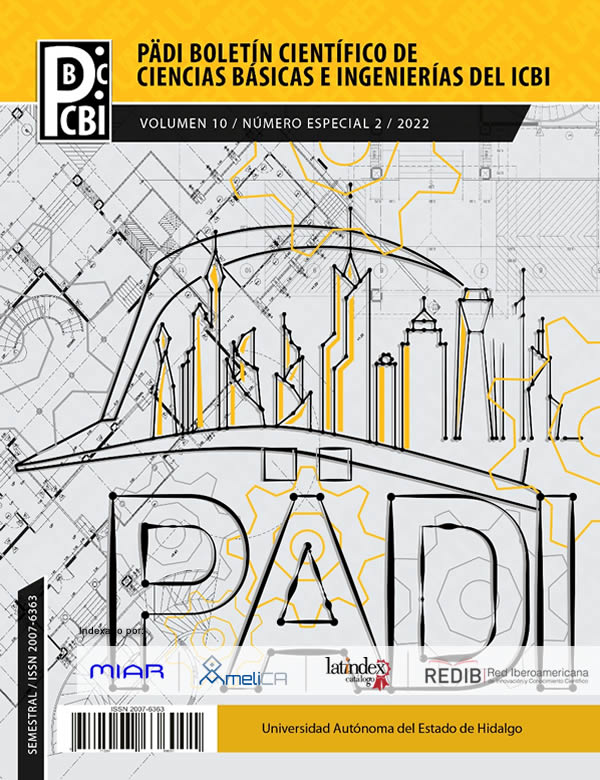Optimal assignment of personnel to facilities during a strike
Abstract
The purpose of this research work was to develop a binary linear programming model for the assignment of workers to guard facilities at a university in case of strike. The objective of the model developed is to minimize the total travel distance of the teachers to the different facilities belonging to the university. Some of the characteristics that were considered to establish certain conditions in the development of the model were the age of the teachers, their sex, the kilometers of travel and the capacity to house the teachers in each facility. The result generated by the computational model implemented in LINGO showed that the optimal allocation, by assigning a total of 596 teachers to the facilities considered, the proportion of women in hazardous shifts was 26.2%, with an age range of 28 to 59 years, while for non-hazardous shifts the results were 61.2% and a range of 28 to 68 years.
Downloads
References
Alzate, P. M. (2017). Modelo de programación entera para la asignación de actividades académicas optimizando espacios en aulas de clase (Tesis de Maestría). Universidad Tecnológica de Pereira, Colombia.
Arikan, F., y Sozen, S. (2021). A hierarchical solution approach for occupational health and safety inspectors' task assignment problem. Occupational Safety and Health Research Institute (OSHRI), 12(2), 154-166.
Bohórquez, J. y Sánchez, C. (2015). Desarrollo de un modelo matemático para la asignación y rotación de personal para la compañía prestadora del SITP; este es mi bus S.A.S. (Tesis de Maestría). Universidad Distrital Francisco José de Caldas, Colombia.
Dönmez, K., Demirel, S., y Özdemir, M. (2020). Handling the pseudo pilot assignment problem in air traffic control training by using NASA TLX. Journal of Air Transport Management, 89.
Farasat, A., y Nikolaev, A. G. (2016). Signed social structure optimization for shift assignment in the nurse scheduling problem. Socio-Economic Planning Sciences, 56, 3-13.
Faudzi, S., Abdul-Rahman, S., y Abdul-Rahman, R. (2018). An assignment problem and its application in education domain: A Review and Potential Path. Hindawi, 2018, 1-19.
Hillier, F. S., y Lieberman, G. J. (2010). Introducción a la investigación de operaciones (ed. 9na.). D.F., México: McGraw-Hill Interamericada.
Ho, W., y Ji, P. (2005). PCB assembly line assignment: a genetic algorithm approach. Journal of Manufacturing Technology Management, 16(6), 682-692.
Jaskowski, P., y Tomczak, M. (2014). Assignment problem and its extensions for construction project scheduling. Technical Transactions. Civil Engineering, 111, 241-248.
Karsu, Ö., Azizoğlu, M., y Alanlı, K. (2021). Exact and heuristic solution approaches for the airport gate assignment problema. Omega, 103, 102422.
Krauss, B., Lee, J., y Newman, D. (2013). Optimizing the Assignment of Students to Classes in an Elementary School. INFORMS Transactions on Education, 14(1), 39-44.
Liu, M., Liu, R., y Yang, X. (2019). Workforce Assignment in Assembly Line Considering Uncertain Demand. IFAC PapersOnLine 52(13), 223–228.
Lyu, Z., y Yu, A. J. (2021). Consultant assignment and routing problem with priority matching. Computers & Industrial Engineering, 151.
Moreno, A., Munari, P., y Alem, D. (2020). Decomposition-based algorithms for the crew scheduling and routing problem in road restoration. Computers & Operations Research, 119.
Sagnaka, M., y Kazancoglua, Y. (2015). Shift scheduling with fuzzy logic: an application with an integer. Procedia Economics and Finance, 26, 827-832.
Taha, H. A. (2012). Investigación de operaciones (ed. 9na.). Estado de México, México: Pearson Education, Inc. Taramasco, C., Olivares, R., Munoz, R., Soto, R., Villar, M., y De Albuquerque, V. H. C. (2019). The patient bed assignment problem solved by autonomous bat algorithm. Applied Soft Computing, 81.
Taylor, P., y S. Huxley. (1989). A Break from Tradition for the San Francisco Police: Patrol Officer Scheduling Using an Optimization-Based Decision Support Tool. INFORMS Journal on Applied Analytics, 19(1), 1–24.
Telhada, J. (2014). Alternative MIP formulations for an integrated shift scheduling and task assignment problem. Discrete Applied Mathematics, 164(1), 328-343.
UAEH. (2022). Dirección de Control Escolar, Consulta de horarios. Universidad Autónoma del Estado de Hidalgo. Disponible en: http://sistemas.uaeh.edu.mx/dce/siae/alumnos/horarios/moduloHorarios/vista/vtaHorarios.ht4ml
Wu, C.-K., Chen, Y.-M., Wu, D., y Chi, C.-L. (2020), A Game Theory Approach for Assessment of Risk and Deployment of Police Patrols in Response to Criminal Activity in San Francisco. Risk Analysis 40(3), 534-549.
Yan, S., Wang, C., y Chuang, Y. (2019). Optimal scheduling for police patrol duties. Journal of the Chinese Institute of Engineers, 43(1), 1-12.
Zhang, Z., y Xie, X. (2015). Simulation-based Optimization for Surgery Appointment Scheduling of Multiple Operating Rooms. IIE Transactions, 47(9), 998-1012.













